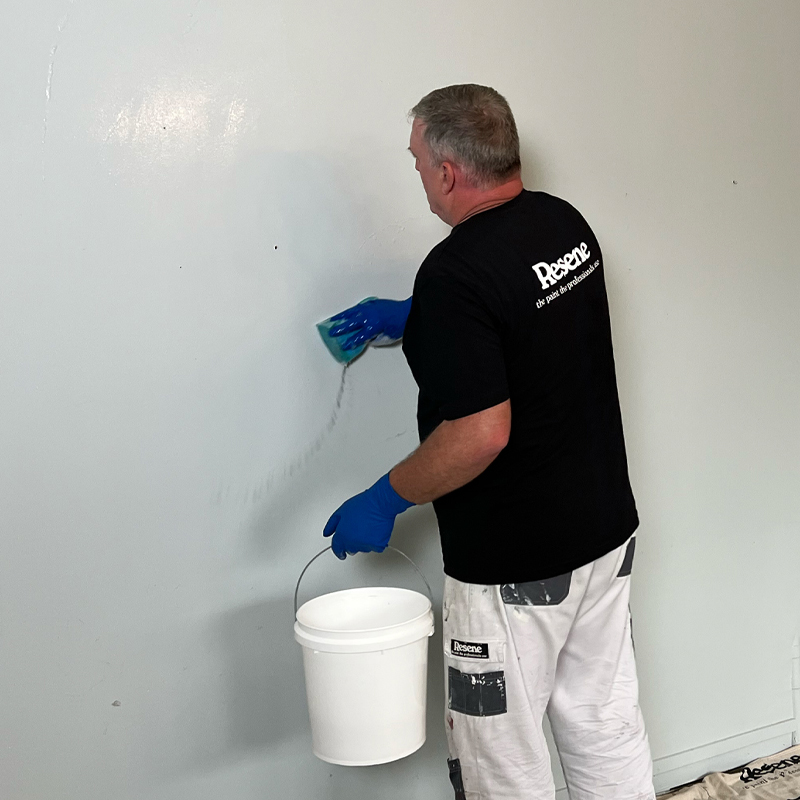While it can take some experience and skill to achieve a professional result, applying your Resene paint with an airless sprayer can save a lot of time and gives a beautifully seamless and uniform finish when done right.
What is airless spraying?
In basic terms, a high-pressure pump atomises paint at the point of discharge. The actual painting part is relatively simple, but proper planning is absolutely crucial, because as soon as you pull the trigger, paint comes out – and lots of it!
But never fear, Allan McMillan from Resene is here to start from the very beginning and take you through what you need, how to prepare and the correct method of spray painting a room.
Choose the correct type of paint
It’s essential to choose a paint that is appropriate for use in an airless sprayer. To find out if yours is, look at the label on the back of the paint can or on the relevant data sheet. Product data sheets describe the recommended usage of the product and the spreading rate per litre and the dry film thickness in microns, which is the thickness of the material (usually one coat) after properly drying.
Protect your space
Due to the nature of spraying paint, areas of your room that you’re not painting need to be adequately prepared and protected. Place Resene drop cloths on the floor, then apply masking film with masking tape – or Resene Pre-taped Masking Film – around your doors and windows. After sanding and filling any gaps, you’ll also need to adhere masking paper to your ceilings and around your skirtings. Make sure all sanding dust is wiped away with a damp cloth.













